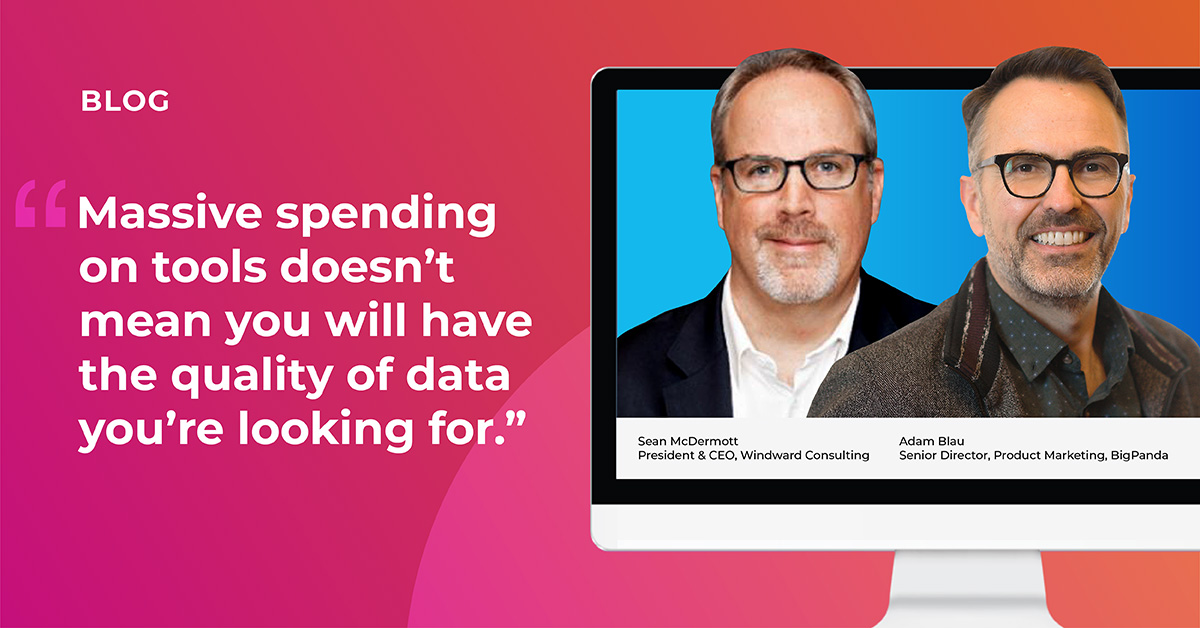Webinar: Making the case for AIOps

Over the past few years, artificial intelligence for IT Operations (AIOps) has risen in popularity within the technology landscape. It’s become a buzzword in the marketing world, and while there are many ways to define AIOps, the best way to start thinking about it is through the lens of outcomes, correlation and strategy—it’s all about the data. With all of the data that needs to be processed and analyzed these days, it’s mathematically impossible for any human being to handle it all themselves. That’s why more and more IT leaders are trusting AIOps. If you’re looking to implement it for your organization, you need a solid argument to back up your case… like Gartner’s AIOps Market report.
How can we improve the processes and workflows that will drive better service availability by ensuring that we’re responding in a consistent and effective manner?
In a recent webinar, BigPanda’s Adam Blau and Sean McDermott from Windward discussed the key takeaways from the latest Gartner AIOps Platform Market report to reveal the clearest path to showing value for AIOps—and how it can help change the narrative around how IT Ops teams support organizational growth. Keep reading to learn more about how this report can help you make the case for AIOps, or watch the webinar on-demand here.
Defining AIOps
The terminology of AIOps is becoming less and less important. McDermott says that companies should be asking questions like, “Can machine learning and AI help me drive a higher level of service availability?” If the answer is yes, then it would be prudent to begin looking at AIOps as part of an overall strategy for your organization. Some of the hype around AIOps and its capabilities, like the expectation of everything happening from end to end without any humans touching it, might be far-fetched. A great place to start is looking at the use cases highlighted in the Gartner report—like anomaly detection, event management correlation and centralized dashboards, just to name a few.
The technology can only go so far, and BigPanda can provide the platform for AIOps, but as Adam Blau says, “It’s the people and the processes that need to adapt in order to improve service availability.” You can talk about tools all day long and even spend millions of dollars on the latest and greatest tools, but if you don’t have the right people and processes utilizing those tools, it’s all for nothing. Since the two fundamental jobs of any IT department are to build digital capabilities and make sure they’re up 100% of the time, if something doesn’t work, it’s essentially useless.
It all starts with the data
Your entire AIOps strategy revolves around data. AIOps starts with driving quality in terms of data that will then also drive downstream standardization improvements in terms of how you can improve the processes and workflows that will drive better service availability. Not having observability can have disastrous consequences, like massive outages. Making sure all data is being covered and monitored ensures that IT Ops leaders are responding in a consistent and effective manner to anything that comes up. Massive spending on tools doesn’t mean you will have the quality of data you’re looking for.
Top barriers to adopting AIOps
Many companies have difficulty measuring the value of an AIOps solution and don’t understand the benefits it can bring them. The biggest barrier that many companies are facing right now in regards to implementing an AIOps solution is trying to come up with the value proposition and rationale for the investment. The reality is, no matter what you’ve spent on different platforms or tools in the past, what worked five years ago probably isn’t going to work today since the technology landscape is constantly evolving. Getting top leadership on board with making a change isn’t always easy, especially when what you need to drive efficiencies is going to cost them more money.
Learn how to get started with AIOps today
To learn more about the AIOps, some of the barriers organizations still face, and how to get started, click here to watch our self-guided demo.




